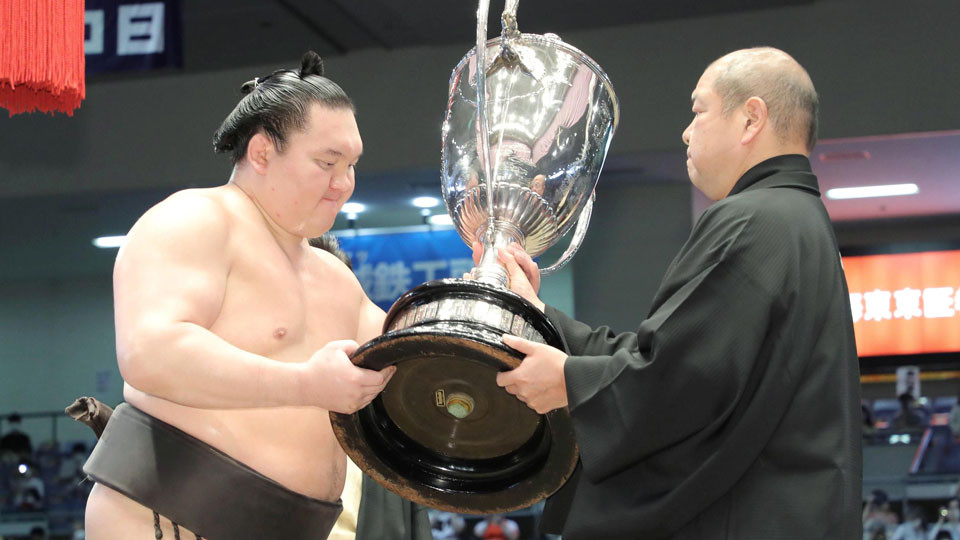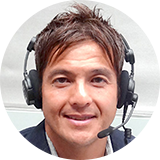Sumo tours again
The July tournament was the first to take place outside Tokyo in 16 months. Traditionally, the sport leaves the capital three times a year, and July's contest is always in Nagoya. But the COVID-19 pandemic disrupted the schedule and kept sumo and its wrestlers in Tokyo. So the latest competition marked a welcome return to some kind of normal. For Nagoyans, it was their first chance to see live sumo in two years, and it sure was worth a wait.
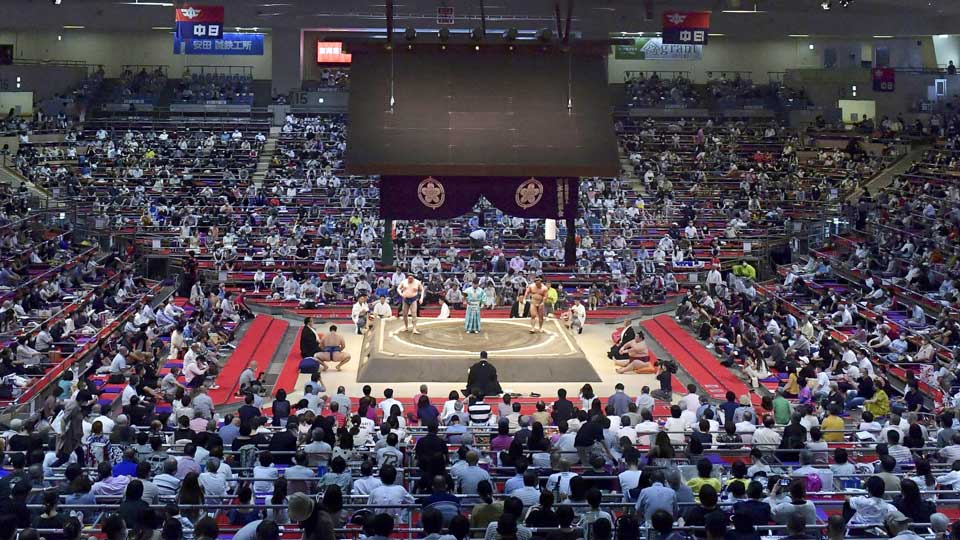
Hakuho returns
One of the hottest topics heading into the Nagoya contest was the return of yokozuna grand champion Hakuho. The 44-time champ had either sat out or withdrawn from each of the past six tournaments. Hakuho knew that if he kept that streak going, he would be under serious pressure to retire, so he entered the contest with a do-or-die mindset.
Terunofuji guns for the ultimate promotion
There was plenty at stake for another wrestler, too. The 29-year-old Terunofuji had won the two previous tourneys and was gunning for promotion to the top rank of yokozuna. He would need to win at least 13 bouts to get it. Before the tournament, the Mongolian dynamo spoke about what reaching the top would mean to him. He said that you can't know what it's like to be a yokozuna until you become one, and he wanted to have that feeling. The most crucial stage of his sumo career took place in Nagoya.
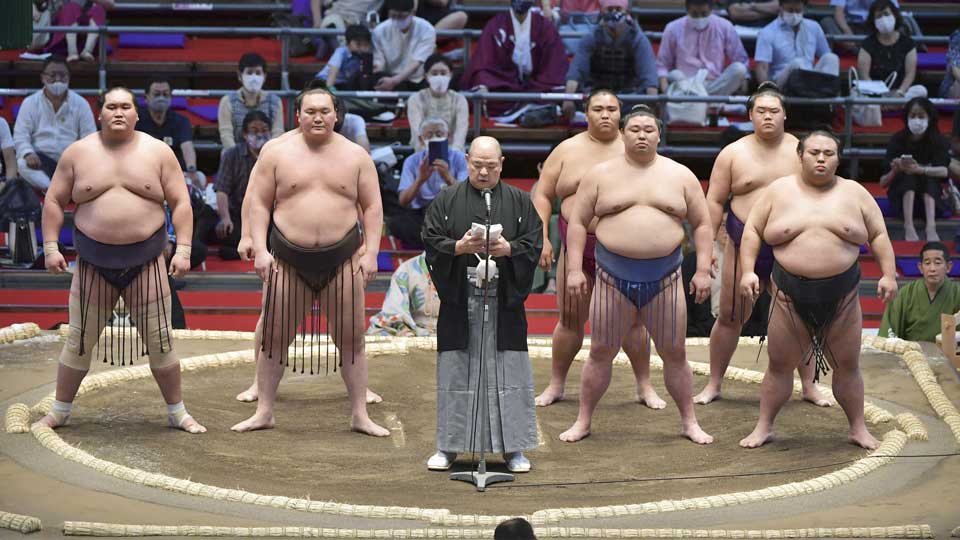
Titans on a collision course
When the tournament got underway, it was clear that Hakuho and Terunofuji were head and shoulders above the rest. After five days, they were the only unbeaten wrestlers and it already appeared to be headed for collision course. And that's exactly how it played out. They both reached the final day with unblemished records to set up the epic climax that fans were hoping for. It was only the sixth time in sumo history, and first time since July 2012, that two wrestlers with perfect records went head to head on the final day.
So it was 14-0 yokozuna Hakuho versus 14-0 ozeki Terunofuji for all the marbles on Day 15. The winner would walk away with the coveted Emperor's Cup. They had met 13 times previously, with Hakuho winning nine of those bouts, but their most recent clash was four years ago.
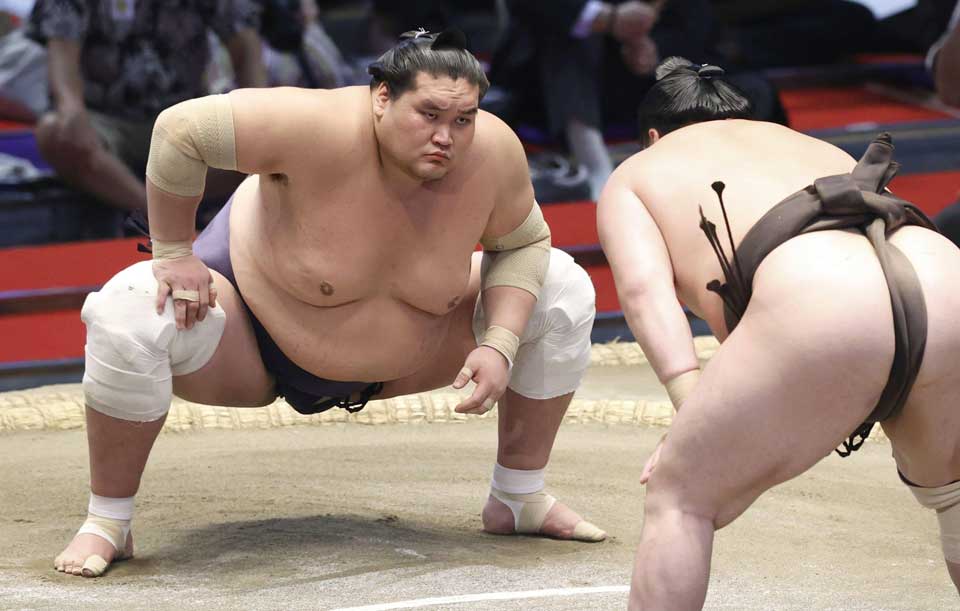
And so, the bout. Hakuho began by extending his left arm to try to disrupt Terunofuji's focus and timing, and followed quickly with a hard forearm shiver. Terunofuji weathered the attack and got his favorite left hand grip on Hakuho briefly, but the yokozuna quickly broke the grip and went on a slapping attack aimed at Terunofuji's face. The younger wrestler lost his cool and hit back with some face slaps of his own, which turned out to be a mistake. It opened him up for a belt grip, and Hakuho took full advantage. The elder wrestler tried a sequence of throwing techniques before he found the arm lock throw that put Terunofuji face down. He took the match and the tournament.
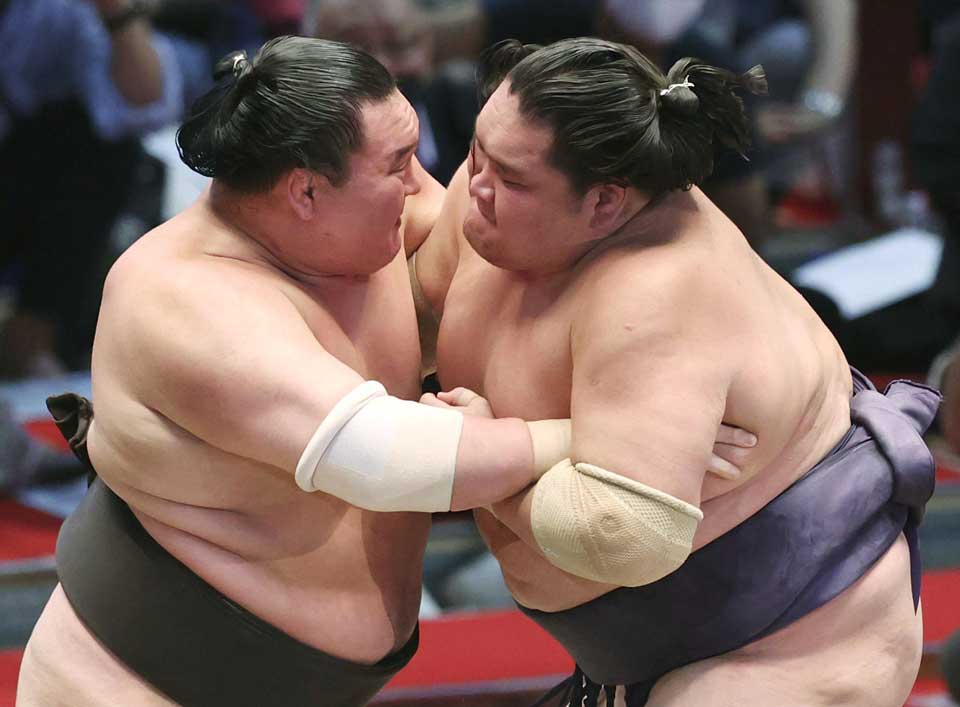
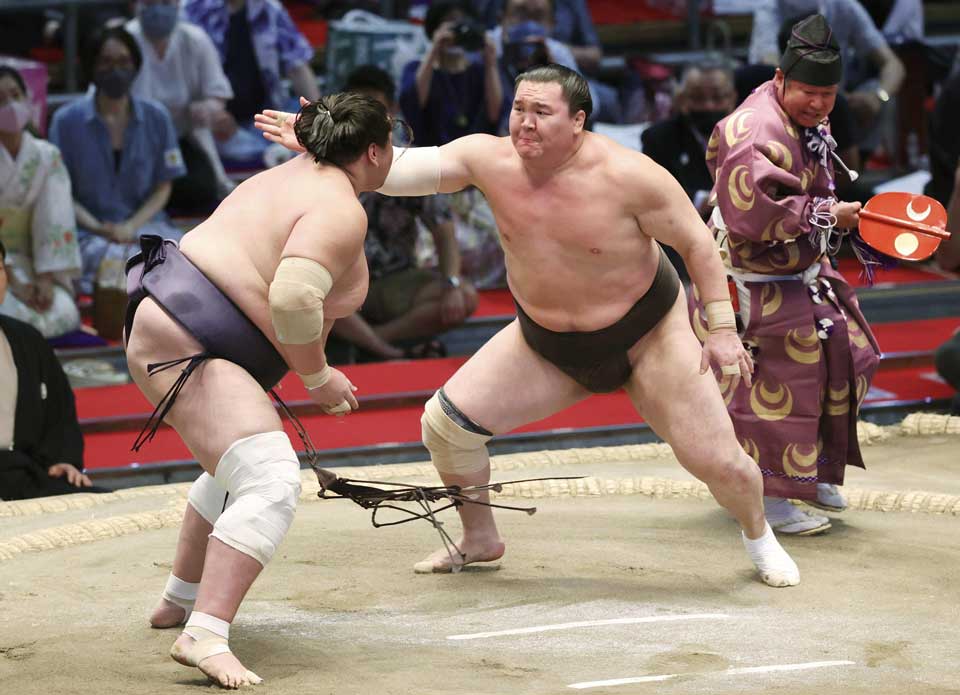
Hakuho had captured his 45th title and the first crown since March 2020. It was also his 16th win with a perfect record.
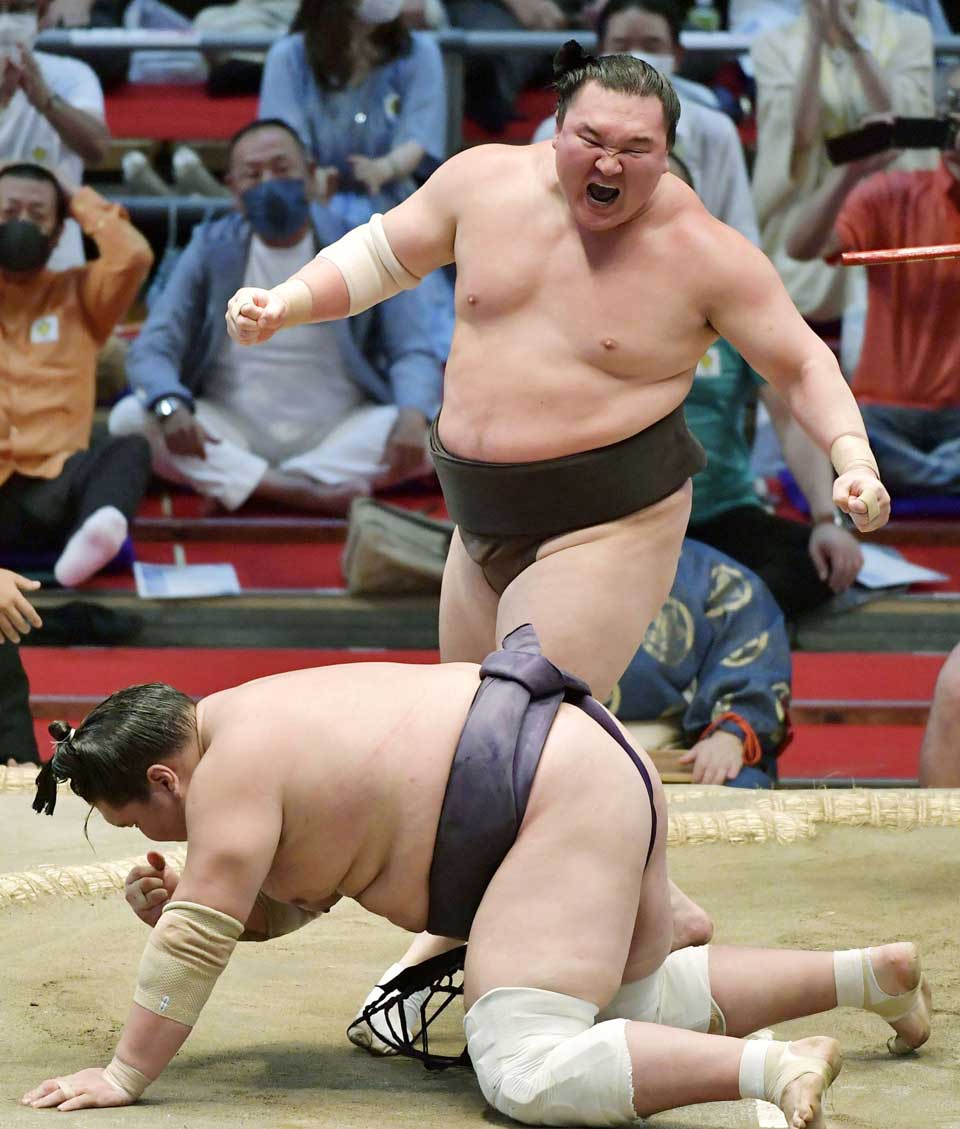
Hakuho has long said he wanted to outlast the legendary Chiyonofuji, who won his final championship at the age of 35 years and five months. When Hakuho lifted the Emperor's Cup this time, he was 36 years and four months old. It's a landmark achievement, but it won't be a record unless he can outlast Kyokutenho, who was 37 years and 8 months when he lifted the cup back in 2012.
Does Hakuho still have juice in the tank?
The 36-year-old Hakuho might have entered the tournament at the top of the sumo ladder, but he wasn't the favorite in most people's eyes. And a perfect record championship? Not likely. Hakuho himself said the main point as just to complete a tournament, but he was hoping for "about 12 wins."
He says he got a confidence boost when he won a nail biter on the opening day. But it was on Day 4, after beating highly fancied up-and-comer Takanosho, that he says he started picturing himself going undefeated in Nagoya. And he says getting that 45th championship means he can brush away any doubts and move forward with confidence. His aging body withstood all the aches and pains this time. The question is: for how much longer? It all depends on his motivation, determination and how much more he wants to accomplish.
Terunofuji gets his promotion
Though Terunofuji came up just short this time, his performance was enough to earn him the promotion he was dreaming of. Three days after the end of the tournament, the Japan Sumo Association informed him officially that he would be wrestling as a yokozuna from now on.
"I'll accept it with pride," he said. "I'll try to uphold the dignity and ability of yokozuna with an immovable spirit. I'd like to continue to improve my skills and become stronger by keep working hard."
The promotion is the culmination of a tumultuous career. Injuries saw Terunofuji drop all the way down to the fifth-tier jonidan division. But he has rocketed back up the rankings in the past year to become only the 73rd yokozuna in sumo history, and the first new one in four-and-a-half years.
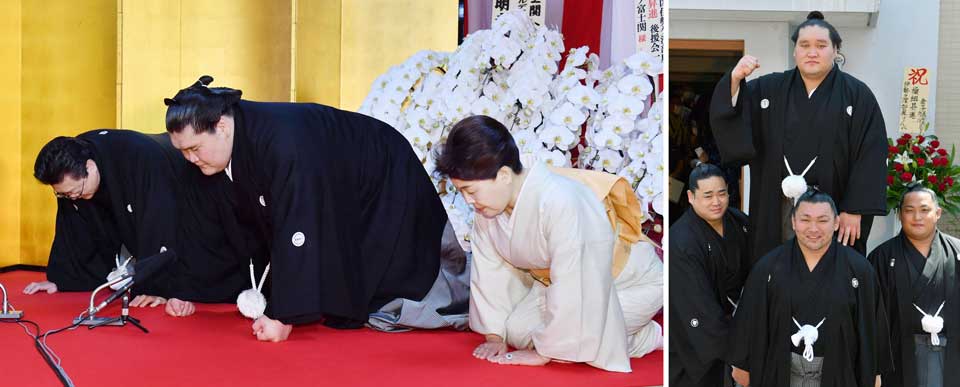
Special prize winners
The Fighting Spirit Prize in Nagoya went to the 23-year-old Kotonowaka, who finished the competition with 12 wins and three losses. The wrestler, picking up his first special prize, has a thoroughbred background: his grandfather was former yokozuna Kotozakura, and his father made it to the third-highest sekiwake rank before retiring to become a stable master.
Mongolian Hoshoryu took home the Technique Prize. He won 10 bouts in Nagoya, showing off an arsenal of moves that included strong underarm throws, a pushing attack, as well as an outside leg trip that has become something of a signature technique. Hoshoryu also has sumo blood running through his veins: His uncle was the former yokozuna grand champion Asashoryu.
Keep your eye on these young wrestlers. They are likely to move up the rankings and become forces to be reckoned with.
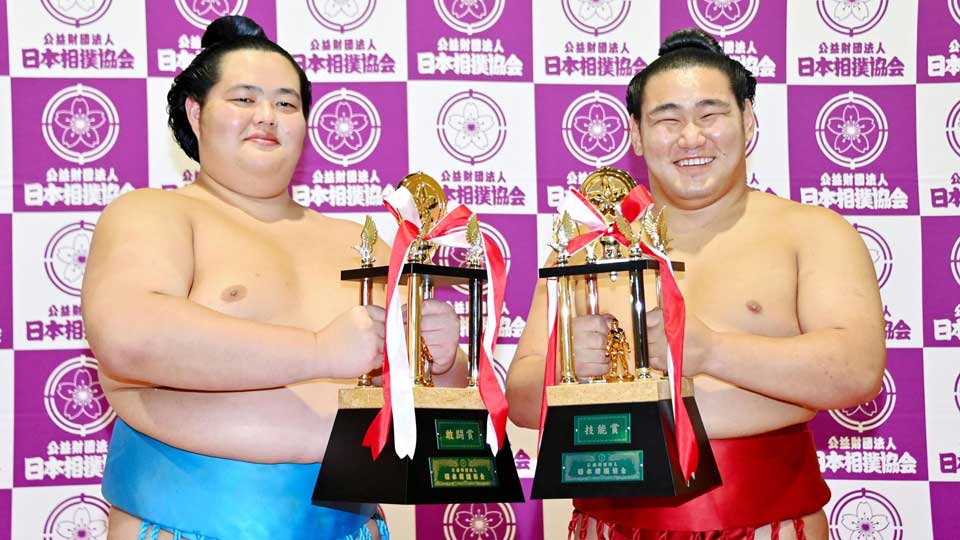
September outlook
Sumo's next outing is in September, in Tokyo, with Terunofuji making his yokozuna debut. We'll get to see how he performs his yokozuna dohyoiri (ring-entering ceremony), and of course his chance for payback when he faces Hakuho again.
His rival will be trying to prove he is still king of the ring, and there's no better way to do that than by beating a newly crowned yokozuna. He also says he wants to reach 900 wins as a grand champion in the next tournament. That shouldn't be hard: He has 899 right now. So keep your eye on that opening day.
Ozeki champion Takakeisho will have a nervous wait to find out if he'll be taking part next time. He suffered an injury to his cervical spine during the July tournament, and though the initial diagnosis was that he could recover in about a month, that doesn't mean he will be able to train or fight with the same intensity. Takakeisho is known for his explosive initial charge, making a hard contact with his head. The injury may force him to change that style. For now, let's just hope the injury isn't as serious as some people fear.
The fall tournament gets underway on September 12 at the home of sumo, the Ryogoku Kokugikan in Tokyo.
